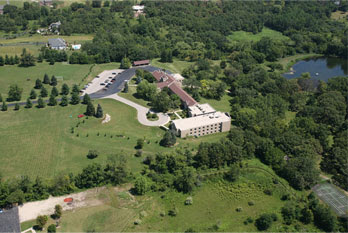So what do future ELCA missionaries study during their week-long orientation? Kumar and I are close to finishing our predeployment training as ELCA missionaries. These are some of the sessions in which we had the opportunity to participate:
We, first of all, learned about the fundamental concept that guides all ELCA global mission activities: accompaniment. Accompaniment is a concept that has come to the ELCA by way of Latin American Christian liberation theologies. Liberation theologians have taught us that any Bible study or Christian ministry ought to begin "from below," that is with the analysis and awareness of one's own social location. Likewise, missionaries are called to act with an awareness of their own and their companions' social location. As a result of this awareness, some important attitudes and values that guide the practice of accompaniment are: vulnerability, mutuality, interdependence, inclusivity, empowerment, and sustainability.
Our group of future missionaries was also introduced to the org chart of the ELCA global mission unit and the identity of ELCA missionaries.
We had the opportunity to meet with global mission personnel deployed to our own geographic region (i.e., Latin & Central America, West & Central Africa, East & South Africa, Europe & the Middle East, and the Asia-Pacific Region) in order to strengthen regional relationships and friendships among soon-to-be-deployed and isolated mission personnel.
We participated in several sessions about cross-cultural dynamics, cross-cultural skills, power, privilege, & money, and interfaith engagement, as well as self-care.
Finally, there were sessions devoted to logistics (primarily about reporting expenses and getting reimbursed for work-related expenses), IT, payroll, personnel policies and expectations, and safety & security. The latter one was by far the strangest and scariest of all training sessions, as our group discussed the creation of contingency plans that might help us in situations of kidnapping, hostage taking, social or political unrest, terrorism, or pandemics.
Tomorrow, we training will conclude and we will be commissioned and sent out for service.



